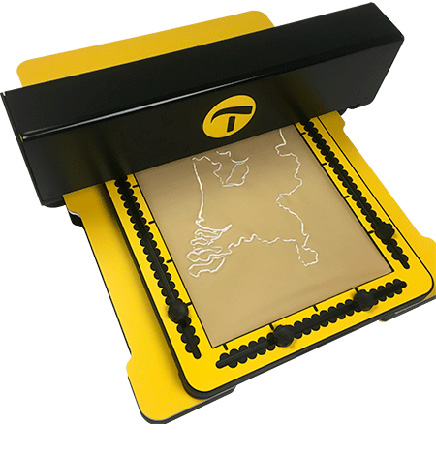Creating a drawing with a fully automated stylus
Combining the accuracy of digital made designs with the versatility of drawing by hand increases working speed and complexity. First, the motor-driven arm sketches a raised line drawing either produced by the built-in drawing tools or provided from external software such as TactileView. Next, continue working on the image by manually adding more elements. Enjoy an emerging tactile diagram that matures in steps.

